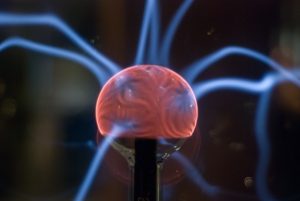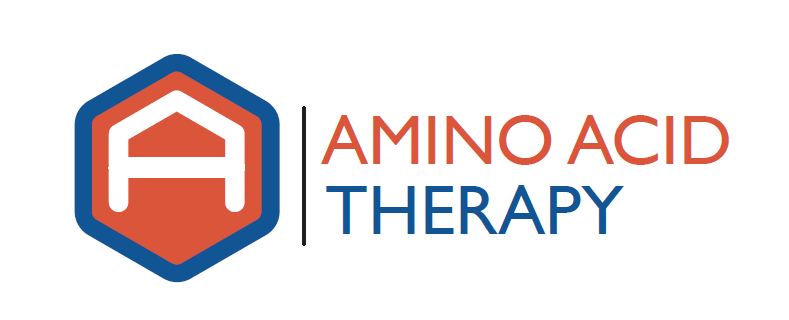by aatadmin | Mar 7, 2018 | Amino Acid Therapy, Parkinson's Disease, Symptoms of Neurotransmitter Imbalance
 Self-treatment with amino acids is incredibly common; we receive emails and/or calls every week from people that are ‘trying’ amino acid therapy on their own, but not getting the results that they want/need. In addition to these instances, I’m going to suggest that the definition of self-treatment be expanded to include anyone that actively or passively does not follow their health care professionals recommended supplement protocol – either by “experimenting” with doses other than those recommended or by using “similar” products to those recommended. This approach rarely works, and the reasons are pretty straightforward. (more…)
Self-treatment with amino acids is incredibly common; we receive emails and/or calls every week from people that are ‘trying’ amino acid therapy on their own, but not getting the results that they want/need. In addition to these instances, I’m going to suggest that the definition of self-treatment be expanded to include anyone that actively or passively does not follow their health care professionals recommended supplement protocol – either by “experimenting” with doses other than those recommended or by using “similar” products to those recommended. This approach rarely works, and the reasons are pretty straightforward. (more…)
by aatadmin | Feb 21, 2018 | Amino Acid Therapy, dopamine dominance, Parkinson's Disease, Symptoms of Neurotransmitter Imbalance
 The sensation that a person’s heart races, often described as “heart palpitations”, after taking a dose of amino acids occurs in roughly 10% of the people we see that are following a dopamine dominant protocol. (more…)
The sensation that a person’s heart races, often described as “heart palpitations”, after taking a dose of amino acids occurs in roughly 10% of the people we see that are following a dopamine dominant protocol. (more…)
by aatadmin | Feb 7, 2018 | Amino Acid Therapy, dopamine dominance, Parkinson's Disease
 I receive dozens of inquiries on a monthly basis about an amino acid protocol that people with Parkinson’s Disease (PD) can use to improve their mental and physical function. Some of these people are not (and have not) taken any conventional medications for PD, such as carbiodopa/levodopa; but many are taking some combination of conventional medications and are not receiving relief from their symptoms. The problem is, everyone’s needs are different, so there is no one protocol people can follow to achieve optimal function. However, here I will detail the general process that should be followed in order to find each person’s optimal amino acid dosing. (more…)
I receive dozens of inquiries on a monthly basis about an amino acid protocol that people with Parkinson’s Disease (PD) can use to improve their mental and physical function. Some of these people are not (and have not) taken any conventional medications for PD, such as carbiodopa/levodopa; but many are taking some combination of conventional medications and are not receiving relief from their symptoms. The problem is, everyone’s needs are different, so there is no one protocol people can follow to achieve optimal function. However, here I will detail the general process that should be followed in order to find each person’s optimal amino acid dosing. (more…)
by aatadmin | Jan 3, 2018 | Amino Acid Therapy, dopamine dominance, Symptoms of Neurotransmitter Imbalance
 A person undertaking amino acid therapy will have periodic urine testing completed in order to determine if/how to adjust their amino acid dosing in order to optimize neurotransmitter function. Along the way, they may get a lab value for dopamine (or serotonin) that is much higher than is expected. This is often referred to as a “dopamine fluctuation”. We have provided a two part series discussing the dopamine fluctuation in more detail; here I wanted to provide a brief overview of what a dopamine fluctuation is and why it’s important to find and correct them as soon as possible. (more…)
A person undertaking amino acid therapy will have periodic urine testing completed in order to determine if/how to adjust their amino acid dosing in order to optimize neurotransmitter function. Along the way, they may get a lab value for dopamine (or serotonin) that is much higher than is expected. This is often referred to as a “dopamine fluctuation”. We have provided a two part series discussing the dopamine fluctuation in more detail; here I wanted to provide a brief overview of what a dopamine fluctuation is and why it’s important to find and correct them as soon as possible. (more…)
by aatadmin | Nov 22, 2017 | Amino Acid Therapy, dopamine dominance, Neurotransmitters, Symptoms of Neurotransmitter Imbalance
 Amino acid therapy involves the determination and administration of the amino acids and cofactors needed to optimize neurotransmitter function. In the vast majority of cases, this involves trying to optimize the function of the “centrally acting monoamines” which include serotonin, dopamine, norepinephrine and epinephrine. The centrally acting monoamines are synthesized from nutrients, including L-tryptophan, 5-HTP, L-tyrosine and L-dopa. These centrally acting monoamines form a system in which serotonin and the catecholamines (which include dopamine, norepinephrine and epinephrine) oppose one another; in other words, optimizing the function of the centrally acting monoamines involves more than just giving ‘more’ of one precursor or the other; it also involves getting the balance right between them. (more…)
Amino acid therapy involves the determination and administration of the amino acids and cofactors needed to optimize neurotransmitter function. In the vast majority of cases, this involves trying to optimize the function of the “centrally acting monoamines” which include serotonin, dopamine, norepinephrine and epinephrine. The centrally acting monoamines are synthesized from nutrients, including L-tryptophan, 5-HTP, L-tyrosine and L-dopa. These centrally acting monoamines form a system in which serotonin and the catecholamines (which include dopamine, norepinephrine and epinephrine) oppose one another; in other words, optimizing the function of the centrally acting monoamines involves more than just giving ‘more’ of one precursor or the other; it also involves getting the balance right between them. (more…)
 Self-treatment with amino acids is incredibly common; we receive emails and/or calls every week from people that are ‘trying’ amino acid therapy on their own, but not getting the results that they want/need. In addition to these instances, I’m going to suggest that the definition of self-treatment be expanded to include anyone that actively or passively does not follow their health care professionals recommended supplement protocol – either by “experimenting” with doses other than those recommended or by using “similar” products to those recommended. This approach rarely works, and the reasons are pretty straightforward. (more…)
Self-treatment with amino acids is incredibly common; we receive emails and/or calls every week from people that are ‘trying’ amino acid therapy on their own, but not getting the results that they want/need. In addition to these instances, I’m going to suggest that the definition of self-treatment be expanded to include anyone that actively or passively does not follow their health care professionals recommended supplement protocol – either by “experimenting” with doses other than those recommended or by using “similar” products to those recommended. This approach rarely works, and the reasons are pretty straightforward. (more…)
 The sensation that a person’s heart races, often described as “heart palpitations”, after taking a dose of amino acids occurs in roughly 10% of the people we see that are following a
The sensation that a person’s heart races, often described as “heart palpitations”, after taking a dose of amino acids occurs in roughly 10% of the people we see that are following a  I receive dozens of inquiries on a monthly basis about an amino acid protocol that people with Parkinson’s Disease (PD) can use to improve their mental and physical function. Some of these people are not (and have not) taken any conventional medications for PD, such as carbiodopa/levodopa; but many are taking some combination of conventional medications and are not receiving relief from their symptoms. The problem is, everyone’s needs are different, so there is no one protocol people can follow to achieve optimal function. However, here I will detail the general process that should be followed in order to find each person’s optimal amino acid dosing.
I receive dozens of inquiries on a monthly basis about an amino acid protocol that people with Parkinson’s Disease (PD) can use to improve their mental and physical function. Some of these people are not (and have not) taken any conventional medications for PD, such as carbiodopa/levodopa; but many are taking some combination of conventional medications and are not receiving relief from their symptoms. The problem is, everyone’s needs are different, so there is no one protocol people can follow to achieve optimal function. However, here I will detail the general process that should be followed in order to find each person’s optimal amino acid dosing.  A person undertaking amino acid therapy will have periodic urine testing completed in order to determine if/how to adjust their amino acid dosing in order to optimize neurotransmitter function. Along the way, they may get a lab value for dopamine (or serotonin) that is much higher than is expected. This is often referred to as a “dopamine fluctuation”. We have provided a
A person undertaking amino acid therapy will have periodic urine testing completed in order to determine if/how to adjust their amino acid dosing in order to optimize neurotransmitter function. Along the way, they may get a lab value for dopamine (or serotonin) that is much higher than is expected. This is often referred to as a “dopamine fluctuation”. We have provided a  Amino acid therapy involves the determination and administration of the amino acids and cofactors needed to optimize neurotransmitter function. In the vast majority of cases, this involves trying to optimize the function of the “centrally acting monoamines” which include serotonin, dopamine, norepinephrine and epinephrine. The centrally acting monoamines are synthesized from nutrients, including
Amino acid therapy involves the determination and administration of the amino acids and cofactors needed to optimize neurotransmitter function. In the vast majority of cases, this involves trying to optimize the function of the “centrally acting monoamines” which include serotonin, dopamine, norepinephrine and epinephrine. The centrally acting monoamines are synthesized from nutrients, including 